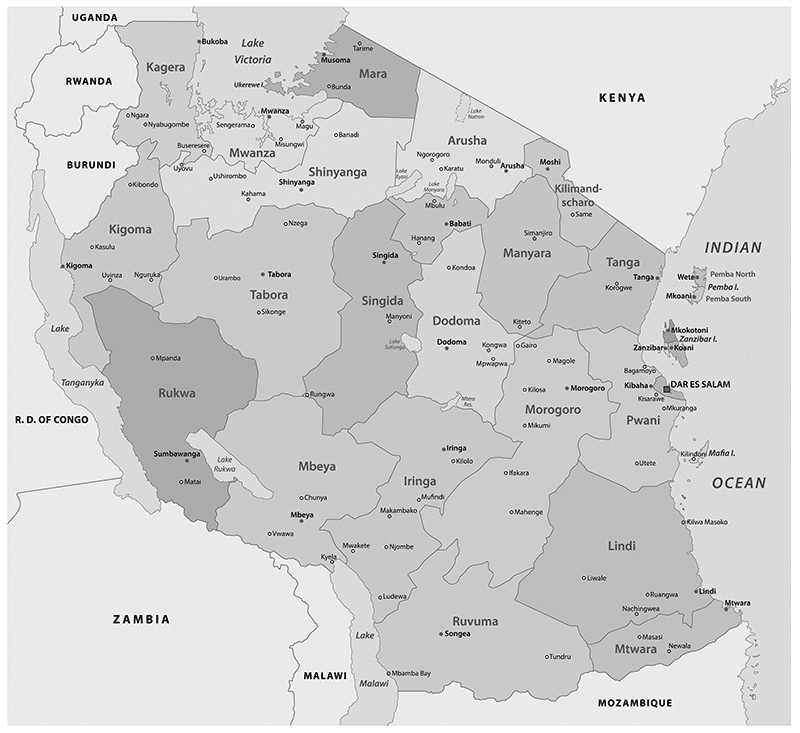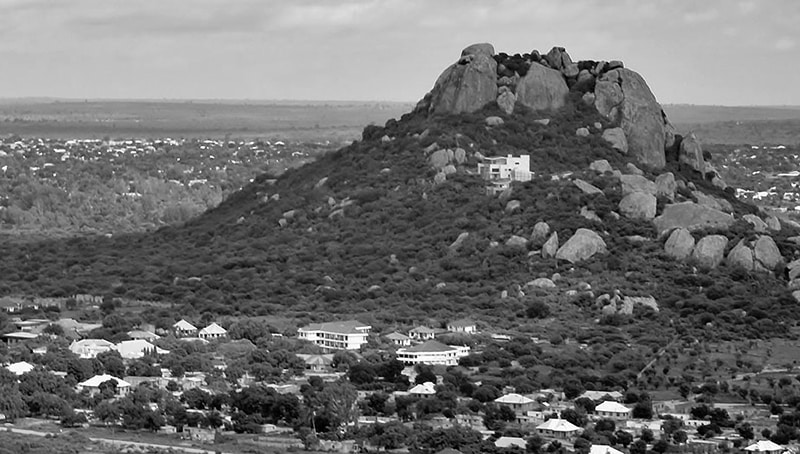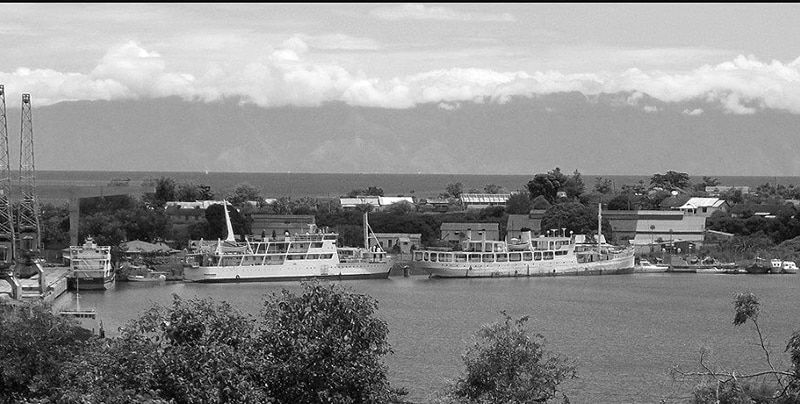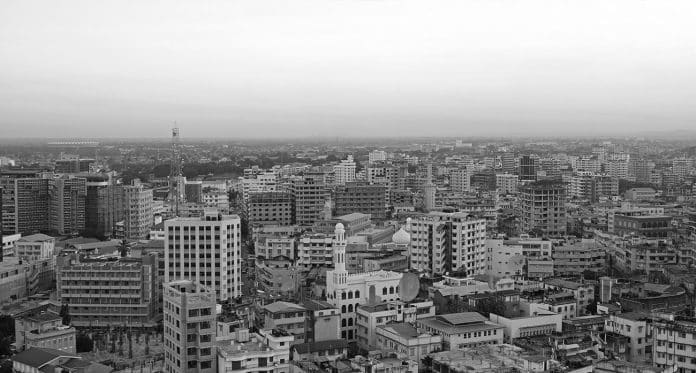List of Cities in Tanzania You Need to Know
Figure 1 Cities in Tanzania Map

Background of List of Cities in Tanzania
There are many cities in Tanzania with Dar es Salaam (‘Place of Peace,’ or just Dar) being the main metropolis and financial center. It is also the regional capital of Dar es Salaam. Dar is the biggest city in Tanzania, in East Africa and Africa’s 7th largest metropolis, with a population of approximately six million people. Dar es Salaam, on the Swahili coast, is an important economic center and one of the world’s fastest-growing cities.
The first Sultan of Zanzibar, Majid bin Said, founded the town in 1865 or 1866. It served as the administrative and commercial heart of German East Africa, including Tanganyika and Tanzania. The decision to relocate the capital to Dodoma, one of the cities in Tanzania, was taken in 1974 and was accomplished in 1996.
Out of all the important cities in Tanzania, Dar es Salaam is the major city in Tanzania for the arts, fashion, media, cinema, television, and finance. Don’t forget it is the most beautiful city in Tanzania. It is the seat of the Dar es Salaam Region, which is one of Tanzania’s thirty one regions for administration, and is divided into 5 districts: Ilala in the middle, Kinondoni in the north, Temeke and Ubungo in the south, and Kigamboni in the east, all of which are separated by the Kurasini estuary.
Mwanza City, popularly called as Rock City by locals, is a port city and the seat of the Mwanza Region, which is located on the southern bank of Lake Victoria in northwestern Tanzania. Among the top cities in Tanzania, it is the 2nd largest city, behind Dar es Salaam, with a population of 1,182,000 in 2021. In terms of population, it is the second biggest city in the Lake Victoria basin, behind Kampala, Uganda, and ahead of Kisumu, Kenya. Mwanza is the fifth largest city in East Africa, behind Dar es Salaam, Nairobi, Kampala and Mombasa. In terms of population within city limits, it is slightly ahead of Bujumbura, Kisumu and Kigali. Kigali and Kisumu, on the other hand, are much ahead of Mwanza in terms of infrastructure. Mwanza City is also the seat of Mwanza Region, which is split administratively into two municipal districts: Nyamagana and Ilemela. Hotels in Mwanza city Tanzania are amazing.
Arusha City is the regional capital of the Arusha Region in Tanzania, with a population of 416,442 people plus 323,198 in the adjacent Arusha Rural District according to the 2012 census. Arusha City, located just below Mount Meru on the eastern border of the Great Rift Valley’s eastern branch, has a moderate climate. The city is regarded as one of the richest cities in Tanzania since the safari capital of the world since it is adjacent to the Ngorongoro Conservation Area, the Serengeti National Park, Lake Manyara National Park, Tarangire National Park, Olduvai Gorge, Mount Meru in the Arusha National Park and Mount Kilimanjaro.
Out of the major cities in Tanzania Africa, Arusha is an important international diplomatic center. The East African Community is based there. The International Criminal Tribunal for Rwanda was based in the city from 1994 to 2015, however it no longer exists. It is a cosmopolitan city with a majority Tanzanian population of diverse ancestry, including indigenous Africans, Arab-Tanzanian, and Indian-Tanzanian residents, as well as a small European and North American minority. Christianity, Islam, Sikhism, and Hinduism are among the religions practiced by the people of Arusha. Because it is viewed as a neutral city that does not function as the political center of any of the component nations, Arusha City was proclaimed the capital city of the planned East African Federation in 2018. Due to its long – standing history of hosting key East African events and organizations compared to other cities in Tanzania, the city has relevance to the whole continent.

Dodoma (lit. It has sunk’ in Gogo) is the capital of the Dodoma Region and the national capital of Tanzania, with an average population of 410,957 people. It is amongst the top ten cities in Tanzania. The Tanzanian government stated in 1974 that the capital will be relocated to Dodoma for economic and social reasons, as well as to centralize the country’s capital. In 1996, it was designated as the formal capital. However, most of the original idea was never implemented, and embassies and government offices have avoided relocation to Dodoma. As a result, Dar es Salaam continues to be Tanzania’s commercial and de facto capital.
Mbeya is one of the cities in Tanzania located along the southwestern region. According to the 2012 census, Mbeya’s town population was 385,280 people. Mbeya is the capital of the Mbeya area, which is mostly rural (population is approximately 2 million).
Mbeya lies 1,700 meters (5,500 feet) above sea level and sprawls across a small highland valley encircled by a bowl of tall mountains. The predominant language is Swahili, which is widely spoken, while English is widely taught in schools.
Morogoro is one of the cities in Tanzania located along the eastern region, with a total population of 305,842 according to 2012 census, located 196 kilometers (122 miles) west of Dar es Salaam, the country’s main city and economic center, and 260 kilometers (160 miles) east of Dodoma, the country’s capital city. The Morogoro Region’s capital is Morogoro. It’s also known as “Mji kasoro bahari,” unofficially, which means “city without an ocean/port.”
Morogoro is a regional agricultural center located at the base of the Uluguru Mountains. The city is home to the Sokoine University of Agriculture. A number of missions with schools and clinics are also established in the city. The Amani Centre in Morogoro has aided around 3,400 handicapped persons in the neighboring areas.
Tanga is the name of Tanzania’s most northern port city on the west coast of the Indian Ocean, as well as the capital of the Tanga Region. In 2012, it had a total population of 273,332 people. Tanga is a Swahili word meaning “sail.”
Tanga city in Tanzania is the capital of the Tanga Region and is located on the Indian Ocean. Tanga District’s capital is also in this city. Tanga is also the country’s bicycle capital. Out of all the cities in Tanzania, It is the only city with a bicycle taxi service.
Kahama is a settlement in Tanzania’s northwestern region. The town is the administrative center of the Kahama Urban District.
Tabora is the capital city of Tanzania’s Tabora Region and is categorized by the Tanzanian government as a municipality. Tabora Urban District’s administrative headquarters is also here. The district has a population of 226,999 people (2012 census).
Among the best cities in Tanzania, Zanzibar City (also known as Zanzibar Town or just Zanzibar; Swahili: Jiji la Zanzibar; Arabic: ) is the capital and biggest city of Zanzibar. It’s on the west coast of Unguja, the Zanzibar Archipelago’s major island, almost north of Dar es Salaam across the Zanzibar Channel. It is also the seat of the Zanzibar Urban/West Region and a district, officially known as Zanzibar Urban District. It had a population of 223,033 people in 2012. Stone Town and Ng’ambo (meaning “The Other Side”) are the two major portions of Zanzibar City; the two regions are traditionally separated by a creek, which is today defined by a huge roadway named Creek Road. Stone Town is the city’s historical heart and the former seat of the Zanzibar Sultanate; it was designated a UNESCO World Heritage Site in 2000 due to its distinctive architecture and culture. Ng’ambo is a considerably bigger, contemporary district that sprung up surrounding Stone Town following the Zanzibar Revolution, with business buildings and enormous residential towers like those in Michenzani. Abeid Amani Karume Foreign Airport in Zanzibar City serves a variety of international and local airlines.

Kigoma is a town and lake port in northwest Tanzania, on the northeast banks of Lake Tanganyika and near the Burundi and DRC borders. It is the capital of the Kigoma Area and has a population of 215,468 people (2012 census). The village is located at a height of 775 meters (2,543 ft).
Ujiji, a historic trade village, lies 6 kilometers (3.7 miles) south of Kigoma.
Sumbawanga is one of the cities to visit in Tanzania located along the western region. With the postcode 55100, it is the capital city of Rukwa Region and the administrative headquarters of Sumbawanga Urban District. According to the 2002 census, the district had a population of about 150,000 people. Sumbawanga is in the Wafipa Fipa tribe‘s homeland, and many people speak Kifipa as well as Kiswahili, Tanzania’s most frequently spoken language. The town’s name literally translates as “throw away your witchcraft,” which is thought to be a warning from local faith “healers” against bringing in superstitious beliefs and practices relating to traditional healers from other areas; some healers still practice in town and the surrounding smaller villages on the plateau. The town contains the region’s main government-funded hospital, Rukwa General Hospital, as well as the smaller Dr. Atiman Hospital, which is administered and operated by the Catholic Diocese of Sumbawanga.
The town serves as a supply and commercial hub for the Rukwa Region, and also houses various government organizations, including the region’s transport agency. Both Libori and Moravian conference centers are located in Sumbawanga. In the town center, there is a small market where local food may be obtained. Maize, rice, fruit, chicken, and fish are all examples (from Lake Tanganyika and Lake Rukwa). Many foreign plastic items and gadgets, as well as bicycles and replacement parts, are accessible. Despite the fact that there are multiple gasoline shops, supplies might be irregular due to transportation challenges from the shore.
Agriculture and small locally held companies account for the majority of the local economy. In the town, there is practically little industry or output. The road to Mbeya might see a significant improvement if it were sealed to provide consistent all-weather access all year. During the rainy season, this route, as well as its extension north to Mpanda, Tabora, or Kigoma, might become inaccessible (Feb-Mar). Large portions of these highways have contracts in place with the Tanzanian government just like some cities in Tanzania. The town may be accessed through Auric Air flights or by bus from Mbeya, which is located to the south and has rail connections to the Zambian town of Kapiri Mposhi, to Dar es Salaam. Rail service is also available from Mpanda in the north to Tabora. Mpanda also has a two-kilometer sealed runway.
Kasulu Town is the second biggest town in Kigoma Region, after Kigoma-Ujiji municipality. Among the cities in Tanzania, it is the thirteenth when it comes to most populated cities in Tanzania, with 208,244 residents as of 2012.
Songea is the seat of Tanzania’s Ruvuma Region in the southwest.
It is situated on the A19 highway.
The Roman Catholic Archdiocese of Songea is headquartered in the city, which has a population of about 203,309 people. During the Rebellion of the Maji Maji people in German East Africa between 1905 and 1907, the city was a hotbed of African resistance. With the opening of the Mtwara Corridor in a few years, the city is set to witness tremendous economic expansion. Between 2020 and 2025, it is expected to increase at a rate of 5.74 percent, making it the sixth fastest growing city on the African continent.
Moshi is one of the cities in Tanzania loacted along the northern region and the seat of the Kilimanjaro region. The municipality has a population of 201,150 people and a population density of 3,409 people per square kilometer as of 2017. The municipality has a population of 184,292 people according to the 2012 official census. The municipality is located on the bottom slopes of Mount Kilimanjaro, Africa’s tallest peak and a dormant volcano. The name Moshi is said to come from the smoke that comes from a neighboring mountain. The municipality is the smallest in Tanzania, with just 59 square kilometers (23 square miles).
Musoma is one of the cities in Tanzania located on the east bank of Lake Victoria. It is the seat of the Mara Region, one of Tanzania’s administrative regions. Musoma Rural District and Musoma Urban District both have administrative offices there.
Shinyanga is a city in northern Tanzania that is also known as Shinyanga Mji in Swahili. Shinyanga Region’s regional headquarters and Shinyanga Urban District’s district headquarters are both located in the city. The town is the name of the area and district.
Iringa is one of the cities in Tanzania with a population of 151,345 people (as of 2012). It is located at 7.77°S latitude and 35.69°E longitude. The name comes from the Hehe word lilinga, which means “fort.” The administrative capital of the Iringa Region is Iringa. The administrative location of the Municipality of Iringa is Iringa Municipal Council. Because of its geographical position, Iringa is one of Tanzania’s coldest locations, yet it has drawn many visitors from colder parts of the world, particularly Western Europe. Ruaha National Park, one of Africa’s biggest national parks, is located near Iringa.
Singida Urban District is one of the six districts that make up Tanzania’s Singida Region. The Ikungi District borders it on the south and west, while the Singida Rural District borders it on the north and east. The town of Singida serves as the administrative center.
According to the 2012 Tanzania national census, the Singida Urban District has a population of 150,379.
Njombe is a town in Tanzania’s southern region. Njombe Region’s regional capital as well as the district headquarters of Njombe Rural District and Njombe Urban District. It is situated on the eastern border of the Kipengere Range at about 2000 meters altitude and has a reputation for being a frigid town.
Bukoba is one of the cities in Tanzania in the northwestern region, on the southwestern beaches of Lake Victoria, with a population of 128,796 people according to the 2012 census. It is the administrative center of the Bukoba Urban District and the capital of the Kagera area. Bukoba Airport and frequent ferry links to and from Mwanza serve the city, as do highways connecting to Uganda’s Rakai District for cross-border automobile commuting, with plans ongoing for a standard gauge railway construction to meet Uganda’s ambitious expectations.
Kibaha is a city in eastern Tanzania with a population of 128,488 people according to the 2012 census. It is the administrative center of the Pwani Region. It is situated in Kibaha District, one of Pwani Region’s six districts.
The capital of the Mtwara Region in southern Tanzania is Mtwara (Portuguese: Montewara). It was designed and built as the export terminal for the catastrophic Tanganyika groundnut initiative in the 1940s, but it was mostly forgotten after the venture was abandoned in 1951. The city is spread out across a broad region with a capacity of 200,000 inhabitants. The current population is around 108,000 people. Mtwara has a deep-water port that can handle ocean-going boats, as well as a number of major municipal structures, including a post office, as part of the unsuccessful Tanganyika groundnut program. Large cargo ships may now dock at the port thanks to recent modifications.
Mpanda is one of the cities in Tanzania situated in the Katavi Region with the postal number 50100. Mpanda District is the administrative center of Katavi Region, and it is one of the region’s four districts. Mpanda is a “border town” in Tanzania’s extreme west, around 500 kilometers north of Mbeya and 380 kilometers south of Tabora. It serves as the administrative center for both the Katavi Region (formed in 2012 by the partition of the Rukwa Region) and the Mpanda District. It is an important center in the rural economy, particularly for rice and maize marketing and transshipment. Mineral prospectors are becoming interested in the Katavi area, particularly for gold. It’s also a good starting place for exploring the picturesque Katavi National Park, which has its headquarters in Sitalike, 35 kilometers to the south. The park is home to a diverse range of East African species, although it is arguably best known for its hippopotamus herds.
All routes entering Mpanda (from Sumbawanga, Tabora, or Kigoma) are still unpaved and may become inaccessible for short periods during the rainy season (especially February–March). The Tanzanian government is working on sealing a big section of the road north of Sumbawanga. Sumry has two daily bus trips to Sumbawanga (240 km, 5 hours) with one of them continuing to Mbeya. Tabora is served by many bus routes (380 km, 9 hours). Minibuses go to Sitalike, while regular bus services run to Usevya and the Lake Tanganyika fishing settlements of Karema and Ikola. Mpanda is the terminus of a passenger rail line that runs from Tabora (approx 12-15hours). Mpanda is one of the cities in Tanzania that has an airport. The government upgraded Mpanda airport to a 2 kilometer sealed runway in 2012, and commercial flight service began in 2013.
In October 2000, Mpanda was designated as the seat of a Roman Catholic Diocese, and it has a splendid church with exquisite graphic windows. The town is also the seat of the Lake Rukwa Anglican Diocese, which was established in June 2010. There is a beautiful Moravian church, and Lutheran, African Inland Church, and Tanzania Assemblies of God give additional Christian services. Moslems are well serviced by a number of mosques located across the city.
Tunduma is a town in Tanzania’s Songwe Region, close to the Zambian border. Both the Tanzam Highway and the TAZARA railway (for which it has a station) that connect the two nations have border posts. It’s 103 kilometers southwest of Mbeya. It also serves as the intersection for the tarmac road that connects Sumbawanga to Kasulu and Kibondo in Tanzania’s northwestern regions. Unlike other cities in Tanzania, Tunduma has a population of more than 141,000 people, according to the 2018 projected census.
Makambako is a medium-sized town and district in Tanzania’s Southern Highlands’ Njombe Region, about 40 miles north of Njombe city by road.
Between Njombe, Iringa, and Mbeya, it is situated at the intersection of the A104 and B4 roads. According to the Tanzanian census of 2002, it had a population of 51,049.
Babati is a town in Tanzania’s Manyara Region, located in the Babati Urban District. It is the administrative capital of the Babati Urban and Rural Districts, as well as the administrative center of the Manyara Region.
Since the establishment of Babati District in 1985, Babati town has grown from a small hamlet to one of the cities in Tanzania. The town’s new status accelerated its expansion. The village is nestled behind Mount Kwaraha at an elevation of 2,145 meters (7,037 feet), towards the end of Tarangire National Park and the foot of Lake Babati.
Handeni is a town in Tanzania’s Tanga Region, situated in the Handeni Urban District. It serves as the administrative center for both the Handeni Town Council and the Handeni District. Handeni Town Council has a population of 79,056 people according to the 2012 national census.
Lindi Town is a historic southern Tanzania coastal town and the regional seat of the Lindi Region, situated on the Indian Ocean in southeastern Tanzania at the extreme end of Lindi Bay. The town is situated approx 105 kilometers (65 miles) north of Mtwara, and about 450 kilometers (280 miles) south of Dar es Salaam, It is Tanzania’s southernmost coastal town, and the Lindi Region is named after it, which is one of Tanzania’s biggest and sparsely populated districts. Lindi Municipal District includes the town.
In 2012, the population of Korogwe in Tanzania was 56,282. It is the administrative center of the Tanga Region’s Korogwe District.
The Mafinga Town Council is one of Tanzania’s five districts in the Iringa Region.
Nansio is a small Tanzanian port town and the seat of the Mwanza Region’s Ukerewe District. In Tanzanian lake territory, the town is also a ward on the island of Ukerewe in Lake Victoria. The city of Mwanza uses Nansio as a port of entry for passenger and freight cargo. At the census of August 1, 2002, the ward of Nansio, one of twenty-four in the district of Ukerewe, had a population of 5,967 people. It is also among the cities in Tanzania with a port.
Frequently Asked Questions
-
How many cities are in Tanzania?
There are over 400 cities in Tanzania
-
How many cities in Tanzania?
There are over 400 cities in Tanzania.
-
What is the largest city in Tanzania?
The largest city in Tanzania is Dar es Salaam.
Dar es Salaam is the largest city in Tanzania, with a population of over 6 million people. It is the country’s commercial and financial hub, located on the Swahili coast of the Indian Ocean. The city is known for its vibrant nightlife, beautiful beaches, and bustling markets. Always remember the largest city in Tanzania is Dar es Salaam, which is also the country’s commercial capital and the largest port in East Africa.
Here are the 5 largest cities in Tanzania by population:
- Dar es Salaam
- Mwanza
- Arusha
- Dodoma
- Mbeya
Other major cities in Tanzania include Tanga, Morogoro, Moshi, and Zanzibar City. Tanzania is a country with many beautiful cities to visit, some of which include:
- Zanzibar City
- Arusha
- Stone Town
- Moshi
- Dar es Salaam
The best cities to visit in Tanzania can vary depending on individual preferences, but some popular options include:
- Zanzibar City
- Arusha
- Serengeti National Park
- Dar es Salaam
- Kilimanjaro National Park
Other cities in Tanzania by population size include:
- Morogoro
- Mtwara
- Kahama
- Tabora
Some of the best cities to visit in Tanzania basing on other criteria:
- Zanzibar City
- Arusha
- Dar es Salaam
- Stone Town
- Moshi
Figure 2 city in Tanzania crossword

Across:
- The largest city in Tanzania, known as the business capital of the country.
- A city in northern Tanzania known for its beautiful national parks and wildlife.
- One of the major cities in Tanzania located in the central region and serves as the capital city of the country.
- A city in the northwest of Tanzania, located on the southern shore of Lake Victoria.
- A city in the southwest of Tanzania, situated at the junction of several major highways.
- A city in northeastern Tanzania, located on the Indian Ocean and known for its long beaches and coral reefs.
- A city in the eastern part of Tanzania known for its agriculture and forestry industries.
- A city located on the island of Zanzibar, known for its beautiful beaches and rich history.
- A city in western Tanzania, located on the eastern shore of Lake Tanganyika.
- A city in the northern part of Tanzania, located near the border with Burundi.
- A city in the southern highlands of Tanzania, known for its agricultural production and beautiful scenery.
- A city in the southeastern part of Tanzania, situated on the Indian Ocean and known for its fishing industry.
Down:
- A city in northern Tanzania, known for its proximity to Mount Kilimanjaro and beautiful national parks.
- The city and region in central Tanzania, known for its historical significance and beautiful landscapes.
- A city in the southern part of Tanzania, known for its agricultural production and mining industries.
- A city in the western part of Tanzania, located on the shore of Lake Victoria and known for its fishing industry.
- A city in southern Tanzania, known for its agricultural production and beautiful scenery.
- A city in the northern part of Tanzania, known for its proximity to the Serengeti National Park and wildlife.
- A city in the western part of Tanzania, located near Lake Victoria and known for its gold mining industry.
Bonus:
The largest city in Tanzania, located on the island of Zanzibar and known for its beautiful beaches and rich history.
The 5 largest cities in Tanzania, in order of population. (Note: This is not a clue for a specific word in the puzzle, but rather a piece of information that might help solve some of the words.)
Overall, Tanzania is a country with many diverse and interesting cities to explore, each with its own unique culture and attractions. Visiting one of the biggest cities in Tanzania will help you understand. Life in the largest cities in Tanzania is of a kind. There is a lot in store as far as cities in Tanzania Africa are concerned. All you need to know regarding beautiful cities in Tanzania or cities in Tanzania to visit is out there for you to read. You can never miss finding information about any city in Tanzania.
For more articles related to regions of Tanzania click here!

































